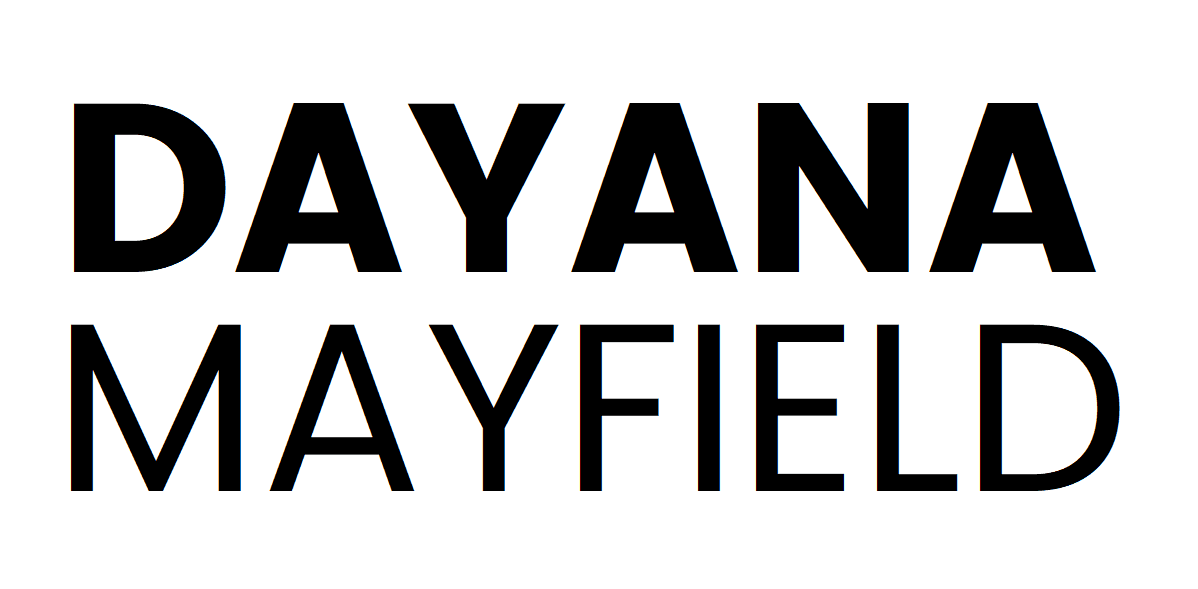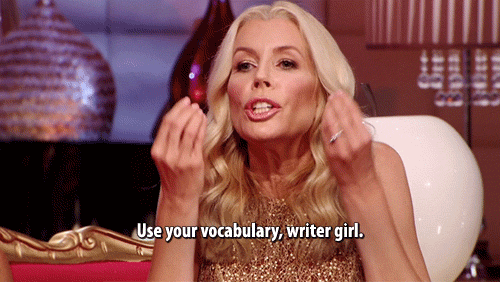Get ready for really good advice, because this guide to SaaS copywriting is based on over 10 years of experience as a freelance SaaS copywriter.
Initially when I started my business in 2015, about 80% of my work was in SaaS/tech, with the rest in IT or ecommerce. Now, I can confidently say that 100% of my client work is within the SaaS industry.
Niching my business has helped easily fill my pipeline with qualified leads and has helped me to quickly identify who I can help, and to deliver on my promises. It feels great to not touch industries that I don’t know anything about.
Fitness Catania – Kinesis sports association… clenbuterol bodybuilders health & fitness – thousands of online courses at the best price
But this post is not about running or owning an online service-based business, nor about my personal passion for SaaS or how I chose this niche at the very start of my business. (We’ll get to all of that another day.)
This post is all about the copywriting!
Note #1: I’ve focused this round up of tried-and-true tips and strategies on copy that sells, not on content that attracts.
Note #2: I write solely for B2B companies. Some of the tips and strategies below will work for B2C SaaS, but all of my experience and thus all of my recommendations are aimed at the B2B environment.
Who can benefit from reading this post:
- In-house SaaS marketers at who are new to copywriting
- In-house SaaS copywriters who are new to the industry
- Early stage bootstrapped entrepreneurs who want to write some of their own conversion material
- Copywriters who want to do better work for their SaaS clients (I don’t pretend to serve them all!)
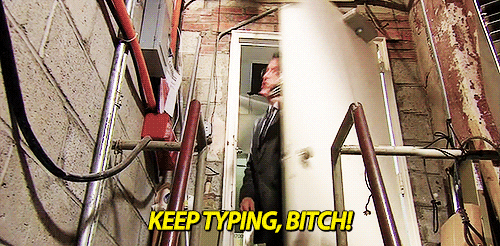
What does a SaaS copywriter do?
A SaaS copywriter helps software companies turn more website visitors into users, usually through clear, persuasive copy on homepages, product pages, landing pages, emails, and ads. The goal is to boost free trial signups, demo bookings, or conversions from paid ads.
Copywriting is different from content writing. While content educates and builds trust over time (think blogs or ebooks), copywriting is about getting someone to take action now.
In SaaS, features matter just as much as benefits. Buyers need to understand what your tool does, how it works, and how it fits into their workflow.
That’s why a skilled SaaS copywriter doesn’t just hype outcomes. They connect the dots between what a feature does and why that matters. They make things easy to understand without oversimplifying.
The best SaaS copywriters strike a balance: they write for humans, sell the product clearly, and keep conversion top of mind.
SaaS Copywriting Strategies
Before we dive into templates and tips, let’s learn the strategies that will help you make great use of them.
1. Survey and interview your customers
I won’t beat you over the head with this. But there are several reasons why this is first on my list.
- Customers may have achieved larger, more important, more far reaching outcomes from using your product than you’re aware of
- Customers might have a very different way of speaking about your product and the industry than the words you’re using
- Customers might be getting better outcomes over some features than others–while your marketing is treating those features equally
- The list goes on.
Basically, if there is important shit in your customer’s brains, you should really get it out of there.
2. Understand JTBD (Jobs To Be Done)
JTBD is the idea that people don’t just buy products—they “hire” them to do a job. In B2B SaaS, this couldn’t be more true. Your customers aren’t buying software just for the features. They’re buying it to solve problems, hit goals, and move faster.
It’s a mindset shift: instead of focusing on what your product is or has, you focus on what it helps someone get done. This moves your copy from “Here’s what our product includes” to “Here’s how this will make your life easier.”
Think outcomes, not just tools.
Here’s a quick JTBD copywriting template to try:
“When I’m [situation], help me [job], so I can [desired outcome].”
Example:
“When I’m managing a large team and tons of moving pieces, help me stay organized, so I can deliver projects on time.”
You’re not ditching features, you’re giving them context. Features are still there, but they’re framed around what they help your users achieve. That’s how you write copy that actually connects.
3. Stick to your messaging strategy
Stick to your messaging strategy! If you don’t have one yet, no worries, item #6 below will walk you through it.
In B2B, buying decisions usually take time. Prospects might visit your site, see an ad, read a case study, join your email list, and talk to a sales rep before making a move. That’s a lot of touch points. If your message is different every time they interact with your brand, they’ll lose trust, or just tune out.
The goal is to make your message recognizable and repeatable. When people see or hear your company name, they should instantly understand who you help, what you offer, and why it matters.
To get there, you’ll need to test your messaging, do customer interviews, and see what actually resonates. Once you’ve nailed it, use it everywhere: your homepage, social, ads, email, sales decks—everywhere. Consistency builds clarity. And clarity builds conversions.
4. Use the StoryBrand framework
What’s that? Haven’t heard of StoryBrand? No need to pack off and head to Nashville. Donald Miller’s infamous messaging training is available in an online course, a book and an audiobook.
What makes StoryBrand so special is that shows you how to treat your customer like the hero of their own story. They are the one who is battling an enemy (bureaucracy or money-sucking Google ads or user churn). You are the guide, not the hero. You don’t battle their enemy for them. You guide them in battling their own enemy and becoming a better version of yourself.
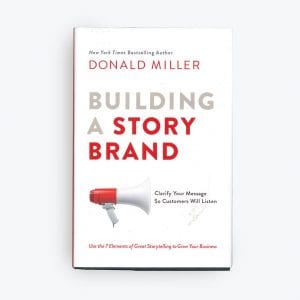
Although it’s marketed more towards small businesses, StoryBrand is equally helpful for SaaS messaging and copy.
My favorite StoryBrand resource is the Brand Script template. It’s really fun to fill out and a great way for me to begin my work with a new client. After my research process, and before writing anything, I fill it out and make sure I really understand my client’s customer and their needs.
Just don’t attempt to fill out the Brand Script until you’ve taken the course, or at the very least read the book. Otherwise you’ll make errors that have a big impact on your messaging.
SaaS Copywriting Templates
Onto the templates! I promise to be offering more of these in the future. 😊
5. SaaS homepage template
If you know your homepage sucks but you’re not ready to hire a pro copywriter to overhaul it for you, then you should definitely grab this template. It’s more of a “themeplate” in that it doesn’t tell you exactly what to say, but rather the strategy behind what you should say. Because of this, it will actually work well for you.
Grab my SaaS copywriting templates here.
6. SaaS cold email templates
Aren’t you excited to get your hands on these? In my SaaS copywriting template pack, I’ve got a cold email that will work for you whether you sell from a demo or your product is self-serve. Plus, there’s a follow-up email too! And if you know me, then you know I have some killer cold email subject lines in there. My ultimate subject line trick? Make them as short and simple as possible, no unique selling propositions allowed.
7. SaaS messaging strategy template
Yes, you really do need to have a set-in-stone messaging strategy. What are you saying and to who? How are you saying it?
Consistency is important, especially in B2B. Check out this SaaS messaging strategy tutorial I made last year and the template that goes with it.
SaaS Copywriting Tips
8. Use trusted headline formulas
Joanna Wiebe, the wonderful human who coined the phrase “conversion copywriter,” has done the time-intensive work of putting every copywriting formula known to man in one article. This beast has an estimated read-time of 59 minutes.
Not to worry. It is easily navigable!
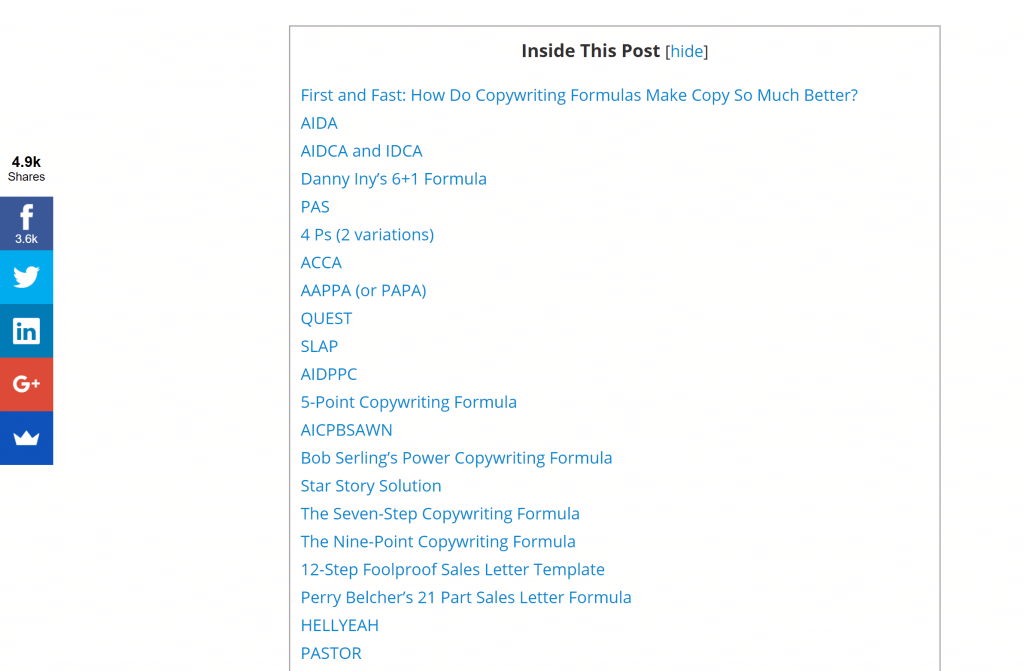
Do yourself a favor and check all of them out.
Particularly for page headings and subheadings, email subjects lines and ad copy, these formulas will reduce your staring-at-screen-time by well over half.
One of the more well-known copywriting formulas is this one: [Get desired outcome] without [core objection or fear].
Here’s an example of this at work in a platform for employee advocacy, Clearview Social.

9. Be creative in headlines and crystal clear in subheadlines and body copy
Confession: I also write fantasy.
My fiction writing helps keep my creating juices alive and flowing. (Pretend I didn’t just say that.)
Being creative is super important in copywriting, because it gives you the ability to shock people out of their stupor. Let’s be honest. In order to sell things, you first have to get someone’s attention. Creative turns of phrases can help a lot.
However, you never want creativity to stomp all over clarity.
Big no no.
A good rule of thumb is to write creative, unique, shocking, hook-worth headlines, and then follow up with a very clear subheadline to explain the main value proposition and outcome.
10. Define a brand voice early on
It might not seem like a top priority when you’re hustling through the early stages of building your SaaS company, but defining your brand voice early is one of the smartest things you can do.
Your brand voice is how your company “sounds” to the outside world—and it does a lot of heavy lifting:
-
Personifies your brand and gives it a clear identity
-
Helps new prospects instantly relate to your product and team
-
Strengthens the emotional connection with current customers
-
Builds trust, loyalty, and long-term stickiness
A strong voice makes your copy feel human, your content more engaging, and your product more memorable. Without one, you risk sounding generic and forgettable, especially in crowded markets.
I like to think of brand voice like a character. Imagine how they talk, how they walk, what they wear. Then bring that energy into your emails, landing pages, ads, and support messages.
At a more foundational level, however, you should consider developing a brand guide (even a short one) ASAP.
11. Use emotional words that fit your targeting strategy
Interesting verbs are great. Who wants to walk when you can saunter? Just kidding. Emotional words are about more than being clever or interesting. They should directly relate to how you want your prospect to feel. When you’re A/B testing, consider hitting on a different emotion (say anticipation instead of anger) and see how that affects your conversions.
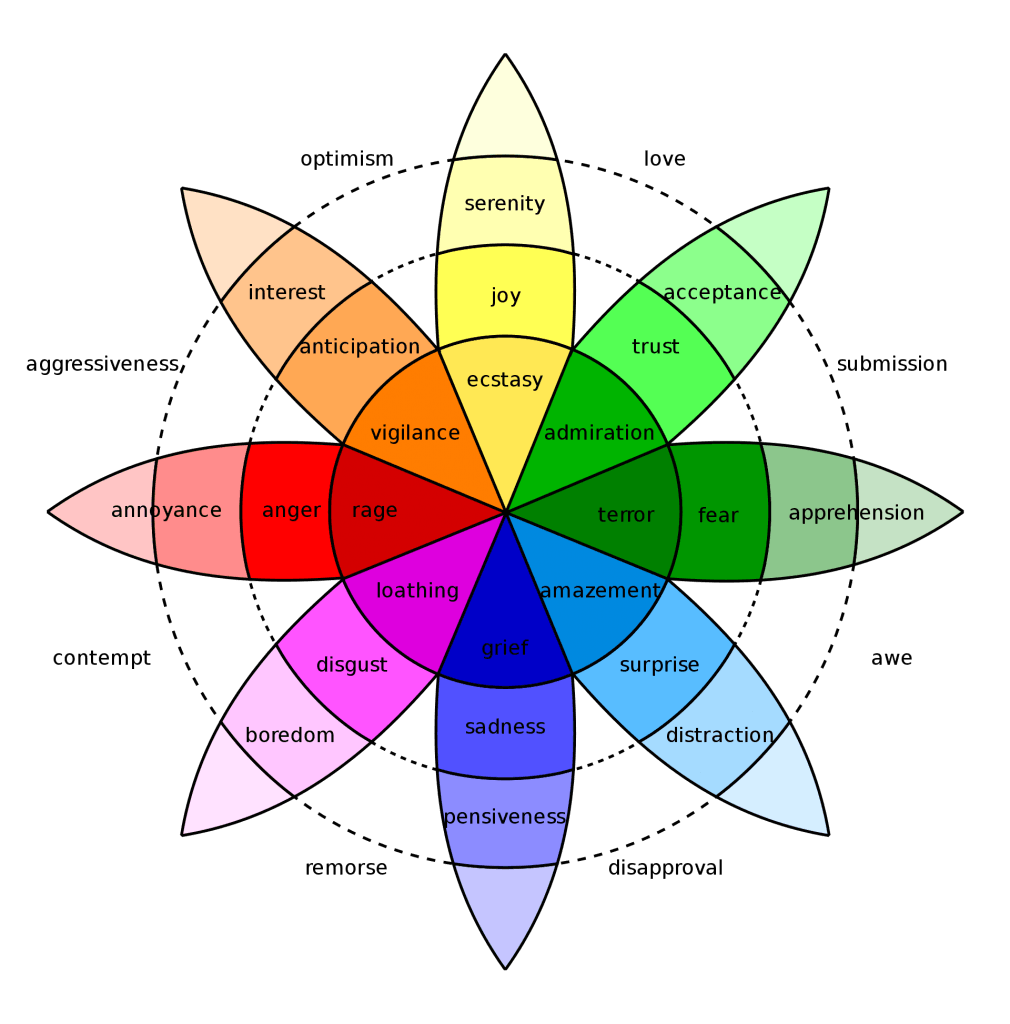
12. Lead with outcomes
You can talk about features and benefits until you’re blue in the face, but if your prospect doesn’t clearly understand the outcome—what they’ll get by using your product—it won’t stick.
Outcomes are what drive action. They tap into your customer’s goals, frustrations, and bigger-picture needs. When your copy makes the outcome obvious and desirable, people are far more likely to sign up, book a demo, or take the next step.
A clear outcome turns “This product does XYZ” into “Here’s how your life gets better.” It answers the unspoken question in every buyer’s mind: What’s in it for me?
You’ll see an immediate difference when you shift your copy to highlight outcomes. See for yourself in this before-and-after example:
Why do outcomes work so well? Because people buy results. They have jobs to do, goals to reach, and problems to solve. Outcomes are the end of the story—and your product is the vehicle that gets them there.
When you write with outcomes in mind, you’re not just describing a product. You’re positioning your solution as the bridge between where they are now and where they want to be. That’s powerful.
Having a clear outcomes in your copy makes an immediate difference. See for yourself in this before & after example:
13. Make sure that prospects understand your features
In SaaS copywriting, there is a conundrum.
All copywriters have heard the rule “Sell benefits, not features.”
And yet, everyone reading this blog post has vetted a SaaS product’s feature page to see whether or not it would satisfy their needs.
I will shout this from the rooftops. Selling benefits DOES NOT MEAN that customers should not be able to know what your features are. Okay?
Now that that’s clear, let’s move onto something better.
“Sell the benefits of your features.”
Better still.
“Sell the outcomes of your features.”
Here are 3 templates that help you do this in your feature pages’ headlines and subheadlines
- [feature] so you can [outcome]
- [feature] that [value proposition]
- [feature] to help you [outcome]
Now that you’ve spiced up your feature headlines, go ahead and get technical so people know that you have what the need. Just make sure to get technical in a brief and compelling way.
I talk about this more in my template pack. Grab my SaaS copywriting templates now.
14. Prioritize with the feature(s) that customers cannot live without
Not all features are created equal, so stop treating them like they are. How many times have you seen a feature list with 10+ items, all getting the same copy length, same icon treatment, same everything?
That’s not helpful for your reader.
Instead, highlight the one or two features your customers truly can’t live without. These are the needle-movers—the ones that make people say, “Yes, this is exactly what I need.” Separate them from the nice-to-haves or rarely used tools. Give them more space, clearer messaging, and better design treatment. Make it obvious what matters most.
15. Tie CTAs to an outcome after the action
A CTA isn’t just the button—it’s the surrounding copy too. The text above and below can boost clarity and motivation. Instead of “Schedule a demo,” try adding what the user will learn or achieve. Less isn’t always more here. In this example I wrote (see below), I added a simple outcome to show what the prospect gets out of the demo. It’s a small tweak that can make a big difference.
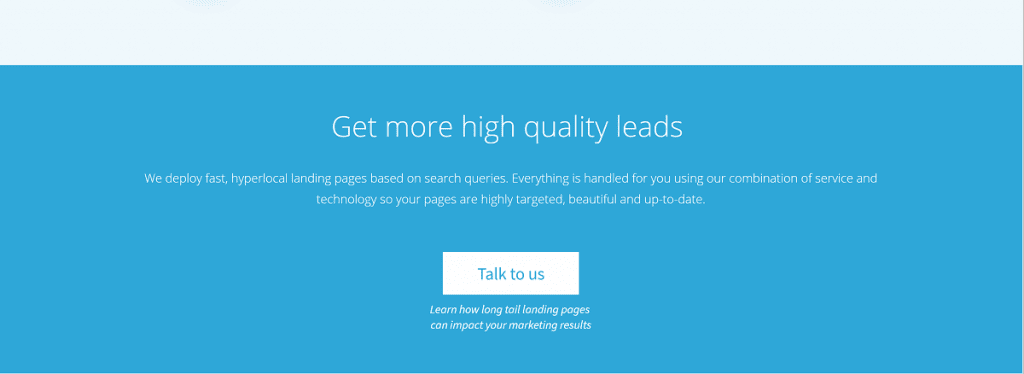
16. Use repetion to your creative advantage
Have you ever noticed how some of the best copy is kind of repetitive? It will have phrases like “More conversions. More impact. More loyalty.” Okay, maybe that’s not the best line of copy, but it is a Thursday afternoon (the end of my work week).
Here’s an example of repetitive copy that I wrote for a client that actually has strategy and research behind it:
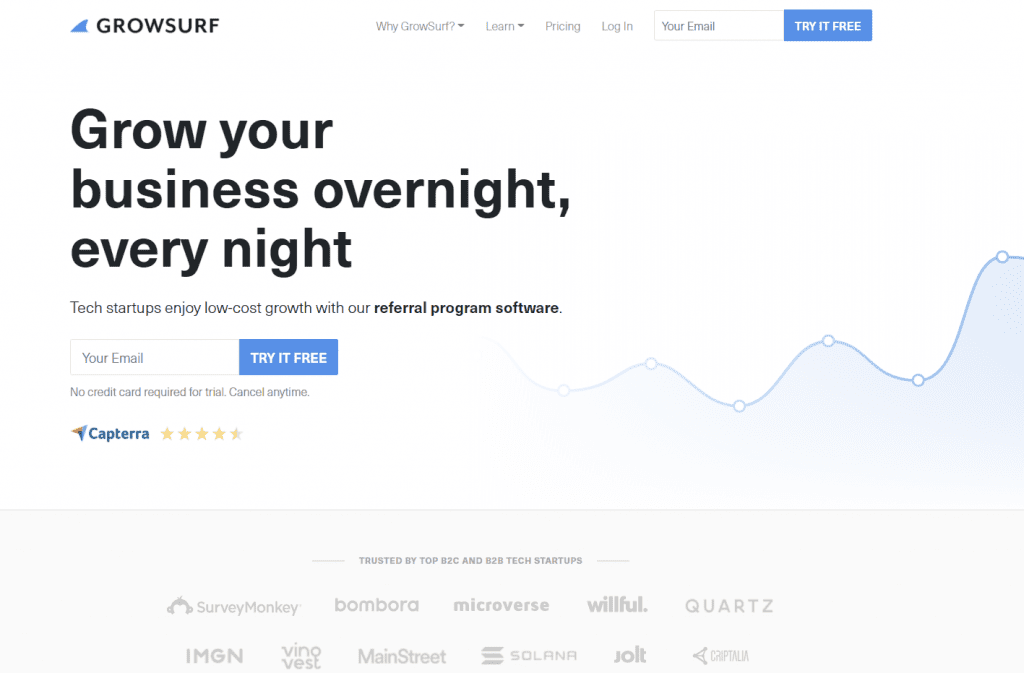
I really love the line I came up with “Grow your business overnight, every night” because it’s true to the product, highly desirable, and soothing. It reduces the anxiety caused by complicated marketing tactics. Plus, that relaxation is mirrored by the lulling repetition of “overnight, every night.” And before you ask, yes the spacing is correct.
If you want to look like a creative genius, and make an impact on your customers, just try the magic of repetitive copy.
17. Make sure your mission is clear on your home page
The best SaaS companies have big missions. These missions are so big, they can’t just fit on a mission or about page. They’re everywhere, and are infused into the brand.
Here’s an example from Givz, a platform for running cause marketing campaigns as an ecommerce store. Note that although they’re a client, I didn’t write this example.
While this is a great example of including your mission, the clarity could get increased a bit. However, it is clear that it’s a tool for Shopify, and the outcomes and mission are so plainly stated that I can allow a lapse in clarity. Because this is a one-of-a-kind platform that is brand new, it would be hard for prospective customers to understand what it is just by looking at the hero section anyways.
This copy does a great job sparking interest and just about any ecommerce store owner would be frothing at the mouth to understand it better. Who wouldn’t want to replace discounts, drive sales, and do good?

The cool thing is that Givz is on a mission to replace discounts for ecommerce store owners while helping them give back to causes their customers care about. It’s a great app.
Even if your mission isn’t as big as Givz, you can still find a way to infuse it in your copy. Your mission is to help your customers, and great copy is super targeted and empathetic, so your mission should be a part of that.
18. Dimensionalize the benefits
If you really want to make your copy so compelling that your target customers can’t help but give you their money, then you need to dimensionalize the benefits.
Eddie Shleyner of VeryGoodCopy does a great job of explaining what this copywriting tactic looks like in this LinkedIn post.

Essentially, you need to always be asking “so what?” when you come up with benefits.
The person will save time. So what? They’ll be able to spend more time with their kids.
Or, the person will get a task done at work. So what? They’ll be able to impress their boss. So what? They’ll keep their job.
By asking yourself “so what?” you can take the benefits in your copy to the next level.
19. Challenge yourself to work within character limits
In the world of SaaS copywriting, every character counts. Working within character limits is not just a skill, it’s a competitive advantage. Copy should be concise.
Setting character limits encourages copywriters to prioritize key information and benefits, ensuring that every word serves a purpose. So, try setting character or word limits for each headline and description before you write it. Do your best to stick to them. This demands more precision and creativity. You’ll be forced to distill ideas down and keep things focused on what really matters to the customer.
As you gain experience, it’ll be easier to work within character or word limits, and you’ll find yourself naturally aiming to be more concise.
The final word
There’s still a lot of bad B2B SaaS copy out there. It focuses too much on features and the “stuff.” Yes, we need to understand the features, but we also need to know the problem, the result, the audience, etc.
And words are words, so no matter how great they are, they still need to be short and sweet. No matter how many advanced SaaS copywriting strategies you employ, you still need to stick within character limits.
Unfortunately for my bank account, I don’t have time to rewrite all of the bad copy plaguing the SaaS industry. Hopefully these tips, templates and strategies can help you help me make it better. Thanks for reading!
Frequently asked questions
What’s the difference between SaaS copywriting and SaaS content writing?
SaaS copywriting is all about conversions and getting people to take action, like signing up for a trial or booking a demo. Content writing is more about education and trust-building through blog posts, guides, and resources, often with a great focus on SEO. Both are important, but copywriting is where you go hard on persuasion, clarity, and positioning. It’s selling, not storytelling (but sometimes both).
How do I know if my SaaS company needs a professional copywriter?
If your homepage isn’t converting, your product pages feel flat, or your messaging is all over the place, it’s time. A pro copywriter can help clarify your value prop, sharpen your CTAs, and actually get people to take action—not just admire your design. Results > vibes.
Should I focus on features or benefits in my SaaS website copy?
In most industries, you can focus almost entirely on benefits. But in SaaS, especially B2B and enterprise, buyers need more. They want to clearly vet features to make sure your product checks the right boxes. That’s why you need both. On your homepage, lead with benefits. On your product and feature pages, highlight what the tool does, but do it in a way that shows the value behind each feature. Think outcomes, not specs.
What’s the best way to test and improve SaaS copy for conversions?
If you’ve got the traffic, A/B testing is gold. But if you don’t, get feedback on key pages. Ask customers what made them sign up, what confused them, or what almost stopped them. Look for patterns in live chat convos, support tickets, and sales calls. Great copy comes from real voices, not guesswork. Listen first, write second.
How can I make my SaaS homepage copy stand out from competitors?
Start with a strong point of view. Don’t just describe what your product does, clarify who it’s for, what problem it solves, and why that matters. Use customer language, not tech jargon. Lead with an outcome, back it up with proof, and keep things skimmable. Most SaaS homepages sound the same. Yours should feel like a real conversation.
What should I include on a SaaS landing page?
Start with a clear headline that speaks to the outcome. Follow with 1–3 key benefits, a short features section, social proof, and a CTA that tells people what they’ll get. Keep the layout simple and conversion-focused. If you’re not sure what’s working, ask your customers. No traffic? No problem. Feedback beats guessing every single time.
How can I improve my SaaS copywriting skills?
Create a swipe file with copy that grabs your attention and analyze why it works. Use proven templates to guide your structure, but don’t forget to make it your own. Do deep customer research and write like you’re talking to one person. Focus on specific problems and clear outcomes, not vague fluff. Add social proof to build trust. The more you write, test, and tweak, the better you’ll get.
Looking for a SaaS copywriter? Learn more about my services.
